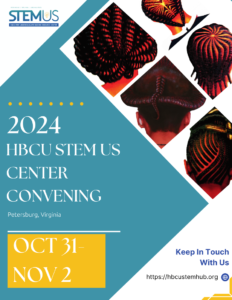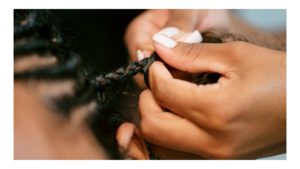The data that I shared on the last installment was not real-life. So, even though the project was impactful (produced measurable academic behavior change that lasted beyond the intervention) the cost per student was too high to be applied to all 800 students in a first-year class. For that to happen the project needs to be scaled.

The quasi-experimental approach used in last Spring’s iteration was designed for students who had failed their first semester at VSU and participation in the program allowed them to appeal their standing and try again. Out of the 200 students who were invited, 22 (around 10%) self-selected to remain and completed the program. Those students spent a week of their winter break at an intensive workshop. Their housing and board was funded by a grant. They were then assigned upper class mentors who had participated in a weekend-long intensive training the previous semester. The 3-day overnight mentor training was also supported by a grant. The activities were all based on previous results, the lab experiments, in which the research dictated every aspect of the intervention.
The mentors for the Spring cohort were actually trained during the Fall of 2023. The 3-day off-campus mentor training packed 36 hours of programming into a weekend hotel stay and included a very popular high-ropes course at Tree Time Adventures. During the shared meals intermingling was encouraged. The training activities were considered critical to the bi-directional nature of the intervention. According to the research rationale, the act of mentoring served both the mentor and the mentee. Therefore, the training served as an “intervention within the intervention” and just like the programming for the mentees, each element of the mentor training was associated with some aspect of our original theoretical model. (Click here for more on PVEST.)
The mentors were encouraged to utilize their training to create stronger relational bonds with their mentees. Over my objections, a mentor was added to the project that had not received training. That student’s mentees did not perform as well as those whose mentor had participated in the fall training. This data supported our premise that the mentor training was critical. Additionally, the research showed that the depth of the relationship within a mentor/mentee group was important. Although the relationship between mentor and mentee did not directly correlate with the adaptation of academic behavior change, the measures of emotional and mental well-being did improve as a result of the mentor/mentee bond. We eventually learned that the academic behavior change was associated with the culture of the entire community. As students felt that they belonged to a high-achieving community their behavior began to match the expectations of the group.

Based on those findings, the mentors were charged with setting high expectations. They were encouraged to model academic behaviors (organized notes, consistent on-time class attendance, regular study times and time management with the use of calendar apps, etc). Mentees were also rewarded for practicing the new skills via an extensive point system The new behaviors were monitored and recorded by their mentors. The data was captured through a series of google forms, google docs and google spreadsheets. The data was monitored and maintained by a team of undergraduate researchers who received academic credit for their work. The entire team was led by a dedicated graduate student for whom this work is a central part of her dissertation. Her stipend is also paid for by the grant.
Unlike the spring cohort, the summer mentees are not on break, they are in summer school. This cohort of provisionally accepted students are required to successfully complete their two summer school classes in order to be fully accepted at VSU for the fall 2024 semester. Like in the spring, the summer cohort has an extrinsic motivator (to gain full admission) but unlike the first cohort the mentees in the summer did not choose to enroll in the intervention. They had to participate.
Interacting with mentors during a 5 week summer school session is vastly different than in a 1-week focused workshop. Instead of the 5:1 ratio of the Spring Cohort, the summer mentors can have as many as 10 mentees. The point (incentive) system still worked but has been automated. This was necessary because the undergraduate research team is not on campus. We are using Mentorloop to collect data. For the first 2 weeks of the 5 week session, no classrooms were available for the fun activities. In addition, there is the weather. During the second week of summer school, the temperatures averaged above 95 degrees. (One of the students fainted due to heat exhaustion while walking to class.) The sense of community that existed within the spring cohort is noticeably different in the summer group and also there are behaviors from this group that were not encountered in the Spring. (A mentor was recently suspended for fighting and their group members divided among other mentors.)
Partnering is one component of Community Based Participatory Research [CBPR] and unlike in quasi-experimental models, the focus is not just on the outcome but also on the process. The results are not the primary goals of CBPR. The research also aims to build capacity,maintain equitable partnerships, establish means of co-learning and reach sustainability. Sustainability is a lofty goal. However, no matter how high or out of reach it seems, I believe that transfer of ownership of the intervention must be the ultimate outcome of funded research efforts. Otherwise, once the grant ends or the people leave, the intervention goes away. In this case, some aspect of the intervention may remain but whether it produces an impactful or even an effective outcome is the unanswered question. The results will speak to the quality of the intervention and the partnerships.
Since my training as an independent investigator did not provide training in CBPR, letting go of my own “ownership” has now become a necessary part of my professional work. Thankfully, my gtd and GTD have prepared me. I have some time to map my priorities I knew from doing a mind sweep exercise, which few projects needed to be held tightly and which of the others to hold loosely or let go.
Sustainability is an important but lofty goal but no matter how high it seems, it must continue to be the ultimate outcome of intervention research efforts. Otherwise, once the grant ends or the people leave, the intervention goes away. In this case, some aspect of the intervention will remain but whether it produces an impactful or even an effective outcome is the unanswered question.
We will begin to answer that question once the mentees get their final grade.






Leave a Comment